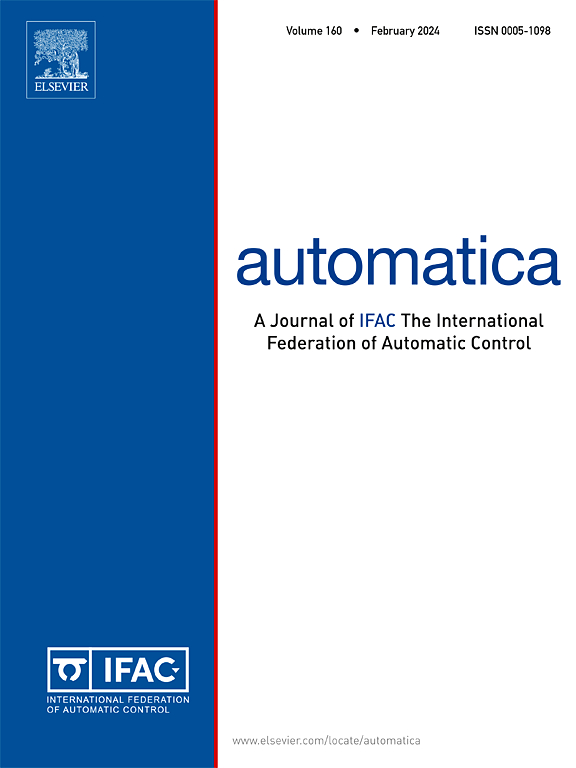线性二次优化控制问题的高效计算原始求解器
IF 5.9
2区 计算机科学
Q1 AUTOMATION & CONTROL SYSTEMS
引用次数: 0
摘要
提出了一种求解线性二次型最优控制问题的快速投影原对偶方法。计算效率来自于重载加速和特定(稀疏)预处理矩阵的选择。为了分析收敛性,我们首先假设线性二次最优控制问题中的权重矩阵是对角的,允许我们提出预处理矩阵,并通过将其写成Lur ' e型动态系统来研究结果算法的收敛性。然后,通过以顺序二次规划的方式重复应用预条件算法,我们将该预条件算法用于加权矩阵非对角线的情况。此外,利用备选定理和算法产生的迭代可以检测出最优控制问题的不可行性。所得到的算法很简单,同时也实现了具有竞争力的计算时间。本文章由计算机程序翻译,如有差异,请以英文原文为准。
A computationally efficient primal–dual solver for linear-quadratic optimal control problems
This paper presents a fast projected primal–dual method for solving linear-quadratic optimal control problems. The computational efficiency comes from a heavy-ball acceleration and specific (sparse) choices of preconditioning matrices. To analyse convergence, we first assume that the weighing matrices in the linear quadratic optimal control problems are diagonal, allowing us to propose the preconditioning matrices and study the convergence of the resulting algorithm by writing it a Lur’e-type dynamic system. We then employ this preconditioned algorithm for the case that weighting matrices are nondiagonal by applying the preconditioned algorithm repeatedly in a sequential-quadratic programming fashion. Furthermore, it is shown that infeasibility of the optimal control problem can be detected using the Theorem of the Alternatives and the iterates produced by the algorithm. The resulting algorithm is simple, while also achieving competitive computational times.
求助全文
通过发布文献求助,成功后即可免费获取论文全文。
去求助
来源期刊

Automatica
工程技术-工程:电子与电气
CiteScore
10.70
自引率
7.80%
发文量
617
审稿时长
5 months
期刊介绍:
Automatica is a leading archival publication in the field of systems and control. The field encompasses today a broad set of areas and topics, and is thriving not only within itself but also in terms of its impact on other fields, such as communications, computers, biology, energy and economics. Since its inception in 1963, Automatica has kept abreast with the evolution of the field over the years, and has emerged as a leading publication driving the trends in the field.
After being founded in 1963, Automatica became a journal of the International Federation of Automatic Control (IFAC) in 1969. It features a characteristic blend of theoretical and applied papers of archival, lasting value, reporting cutting edge research results by authors across the globe. It features articles in distinct categories, including regular, brief and survey papers, technical communiqués, correspondence items, as well as reviews on published books of interest to the readership. It occasionally publishes special issues on emerging new topics or established mature topics of interest to a broad audience.
Automatica solicits original high-quality contributions in all the categories listed above, and in all areas of systems and control interpreted in a broad sense and evolving constantly. They may be submitted directly to a subject editor or to the Editor-in-Chief if not sure about the subject area. Editorial procedures in place assure careful, fair, and prompt handling of all submitted articles. Accepted papers appear in the journal in the shortest time feasible given production time constraints.
 求助内容:
求助内容: 应助结果提醒方式:
应助结果提醒方式:


